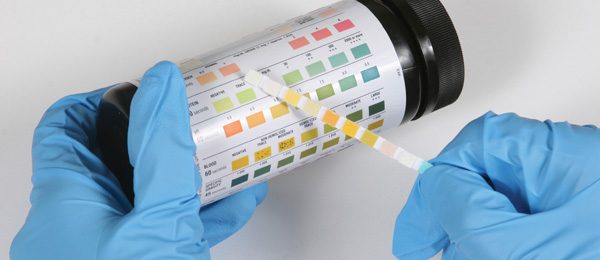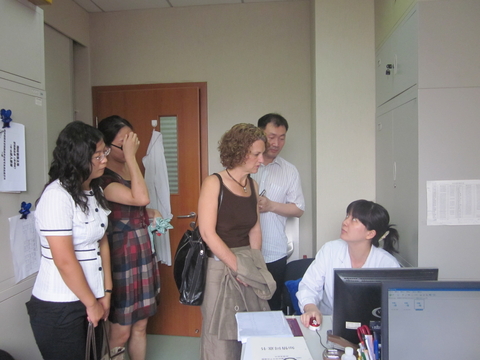
Type 1 Diabetes in China: Building a comprehensive evidence base of its coverage, cost and care (3C)
Type 1 diabetes (T1D) is caused by destruction of the insulin-producing cells of the pancreas, typically due to an auto-immune reaction. It can affect people of any age, but usually occurs in children or young adults and T1D is one of the most common endocrine and metabolic conditions in childhood. People with T1D need injections of insulin every day in order to control the levels of glucose in their blood and without insulin they will die.
Broadly, however, current care and education for people with T1D are not well understood or documented in China and the prospects for people with T1DM are poor. The direct and indirect costs of current care for people with T1D and the investment required to improve care is not known. Our aim is to describe coverage, cost and care of type 1 diabetes in two regions of China-Beijing and Shantou.
Issue
 Little attention has been paid to juvenile diabetes, or type 1 diabetes mellitus in China. The World Health Organization’s Multinational Project for Childhood Diabetes (DiaMond) found that T1DM incidence in China between 1990 and 1999 was measured at 0.1/100,000.
Little attention has been paid to juvenile diabetes, or type 1 diabetes mellitus in China. The World Health Organization’s Multinational Project for Childhood Diabetes (DiaMond) found that T1DM incidence in China between 1990 and 1999 was measured at 0.1/100,000.
This latest data is now more than a decade old and China no longer has one of the lowest incidence rates in the world. The rate is increasing and it is estimated that the prevalence of T1DM in China will increase six-fold by 2025. However very little data exists on type 1 diabetes in China.
Evidence suggests that approximately 41% are diagnosed after admission for symptoms of diabetic ketoacidosis, and access to insulin and specialized care varies based on medical insurance possession, income and place of residence. The direct and indirect costs of current care for people with T1D and the investment required to improve care is not known.
More information is needed on how many T1DM patients are in China and how T1DM is being diagnosed and managed in order to determine how diagnosis care, education and health insurance can be improved.
Methods
 This was a mixed-methods descriptive study with three arms: coverage, cost and care.
This was a mixed-methods descriptive study with three arms: coverage, cost and care.
It was taking place in four tertiary hospitals, three secondary hospitals and four primary health facilities in Beijing, and two tertiary hospitals, two secondary hospitals and two primary health centers in Shantou, China. Two additional hospitals were involved in the coverage arm of the study. A three-year retrospective review of hospital records identified 1604 type 1 patients. 849 participants were enrolled sequentially from inpatient wards, outpatient clinics, and the record review in these 19 hospitals.
To determine the coverage of care, a list of people with T1DM was developed including information on diagnosis, age, sex and vital status.
To estimate the economic burden of T1DM three groups of costs were calculated-direct medical costs, direct non-medical costs and indirect costs from different perspectives of analysis (patients and their families, health system, insurer and societal perspective). The data were collected from people with T1DM (patient–parents face-to-face interviews), hospital billing departments, medical records and government officials using a combined ‘top-down, bottom-up’ approach developed to validate the data.
The third arm includes three components-health policy, clinical care and education, and information management. Face-to-face, semi-structured interviews were conducted with people with T1DM (for those <15 years of age parents were interviewed), health care professionals, senior hospital management and government officials.
The median age was 22 years (IQR=13-34); 48.4% of sample had diabetes < six years (n=849), median HbA1c 8.5% (IQR 7.2-10.5) with significant regional variance (p= 0.002). Insulin treatment was predominantly two injections/day (45%, n=849).HbA1c was significantly associated with region, income, education level and injections/day; and injections/day significantly associated with hours of education. Mean annual total costs (direct and indirect) were 54214CN¥ (US$ 8571)–71.4% were direct costs.
Over 88% of study subjects had insurance coverage but only 21% of their direct medical costs were covered by insurance.
Outcomes
- Information of more than 1600 hospitalized patients was collected for the 1st C, the Coverage, to estimate the incidence and prevalence of T1DM
- 869 questionnaire investigation and 804 medical chart review were conducted for the second and third "Cs", the cost and the care, to analyze the economic burden and health service
- 132 government officers and medical staffs were interviewed with quasi-structured questionnaire to support the analysis of health economics and health service

